Tubular Breasts
TUBULAR BREASTS
One of the most common abnormalities of breast shape is called a tubular breast. Such breasts, also known as tuberous breasts or constricted breasts, result from congenital variation in the development of the breast tissue that can affect one or both breasts. Although there is considerable variation, tubular breasts all share some common features.
Tubular breasts are characterized by:
- Narrow and elongated shape
- Little or no breast tissue in the lower half of the breast
- An areola (pigmented area around the nipple) that appears disproportionately large
- Protrusion of the breast tissue behind the nipple and areola that makes the nipple and areola look puffy
- A wide space between the breasts
- Tendency for the location at which the underside of the breast joins the chest (known as the inframammary fold) to be relatively high on the chest, thus causing the breast to droop and look long and constricted.
Surgical Correction
Surgery to correct tubular breasts is challenging. The most commonly performed procedures almost always augment the breast, either with an implant or using a woman’s own tissue. In addition to adding volume to the breast, the base of the breast must be widened to a normal size, the inframammary fold lowered and the internal constrictions that caused the tubular shape must be released with internal incisions. In addition, the areola is usually reduced in size.
Breast implants have traditionally been used to provide the volume needed to correct a tuberous breast. Although implants continue to be widely used, both perforator flaps and fat grafting can be used as alternatives to breast implants. In particular, the DIEP flap and the TDAP flap have been effective in correcting tubular breast deformity. By using your own tissue, complications unique to breast implants (implant leakage or rupture, rippling, and capsular contracture) can be avoided. Reconstruction using your own tissue means a having a reconstruction with tissue that is yours for life and without having to worry about needing to replace implants from time to time.. Since there is a great deal variability in the severity of tubular breast deformities, the approach or approaches best suited to you will depend upon the condition of your breasts and your goals for reshaping them. Depending both on the severity of the condition and on your insurance benefits, coverage for surgery to correct tubular breasts may be available.
» Learn more about sophisticated natural-tissue alternatives to breast implant reconstruction
» Contact us if you would like to make an appointment and learn more about your options

